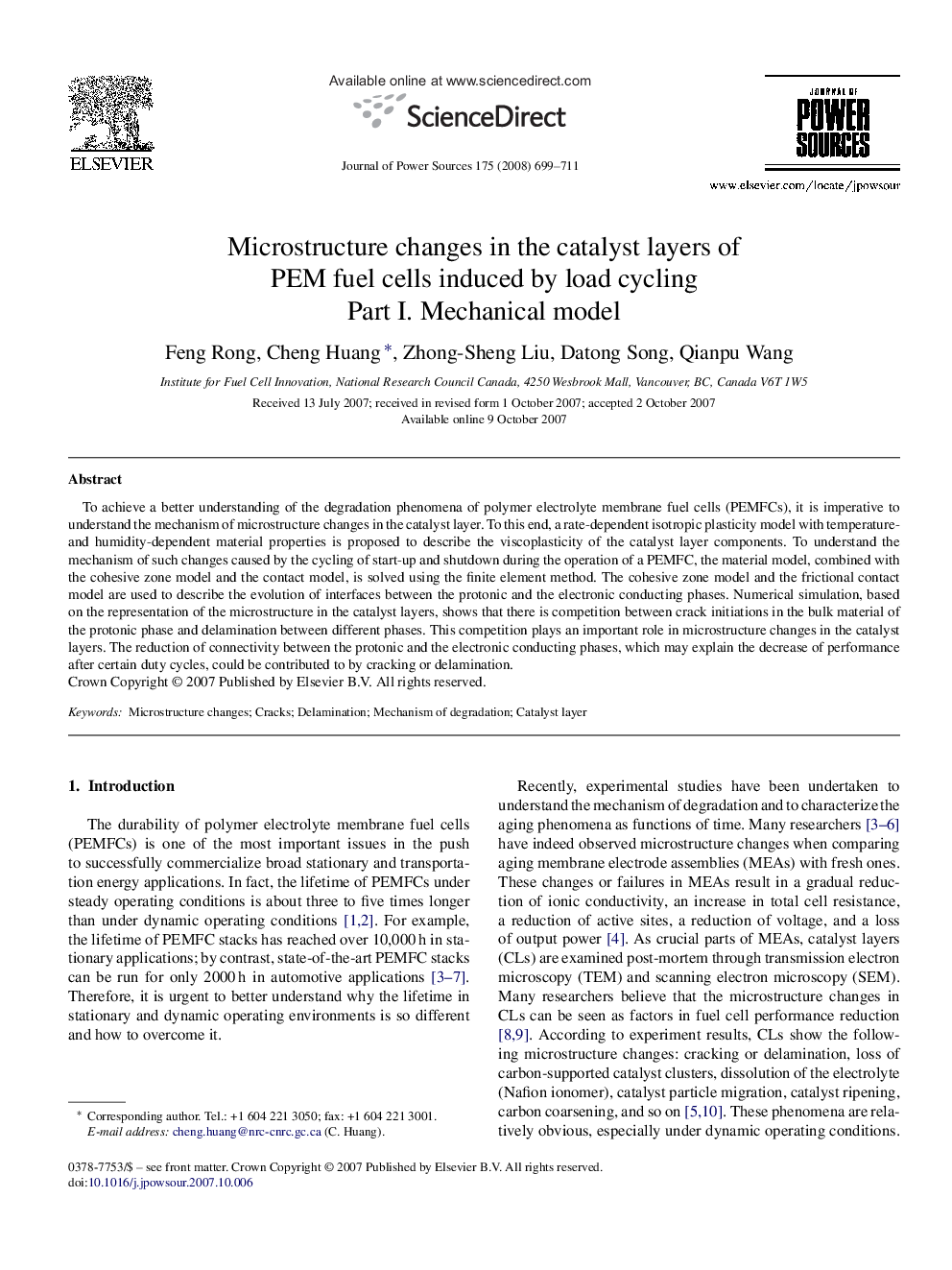| Article ID | Journal | Published Year | Pages | File Type |
|---|---|---|---|---|
| 1290873 | Journal of Power Sources | 2008 | 13 Pages |
To achieve a better understanding of the degradation phenomena of polymer electrolyte membrane fuel cells (PEMFCs), it is imperative to understand the mechanism of microstructure changes in the catalyst layer. To this end, a rate-dependent isotropic plasticity model with temperature- and humidity-dependent material properties is proposed to describe the viscoplasticity of the catalyst layer components. To understand the mechanism of such changes caused by the cycling of start-up and shutdown during the operation of a PEMFC, the material model, combined with the cohesive zone model and the contact model, is solved using the finite element method. The cohesive zone model and the frictional contact model are used to describe the evolution of interfaces between the protonic and the electronic conducting phases. Numerical simulation, based on the representation of the microstructure in the catalyst layers, shows that there is competition between crack initiations in the bulk material of the protonic phase and delamination between different phases. This competition plays an important role in microstructure changes in the catalyst layers. The reduction of connectivity between the protonic and the electronic conducting phases, which may explain the decrease of performance after certain duty cycles, could be contributed to by cracking or delamination.
